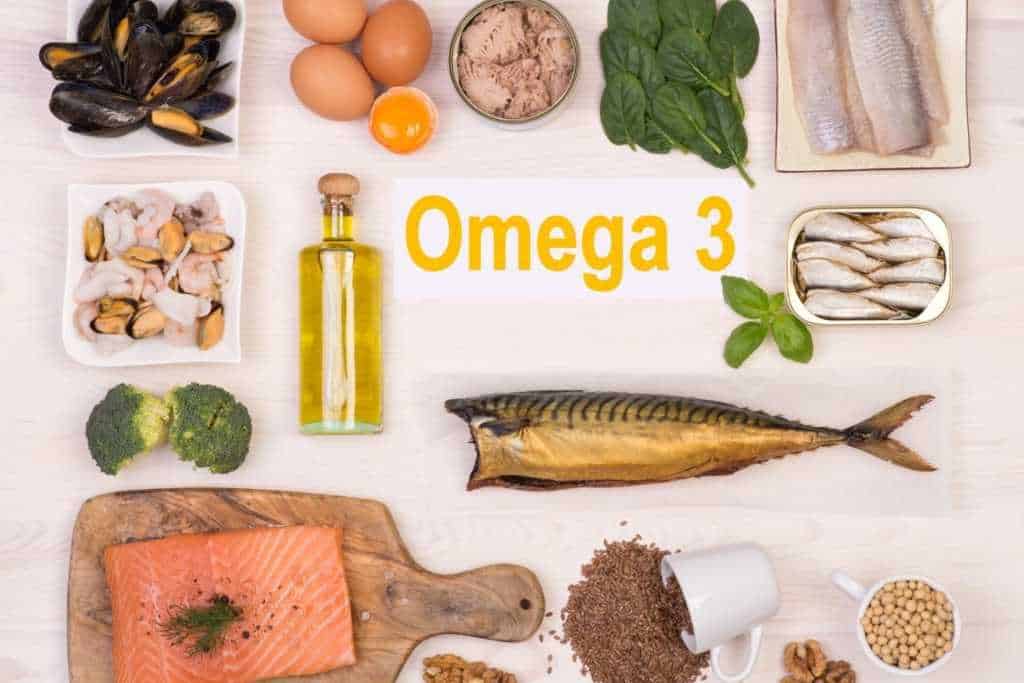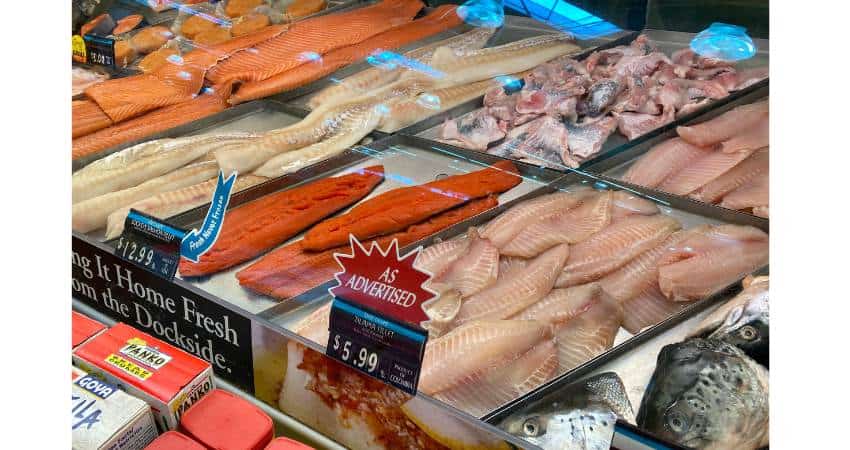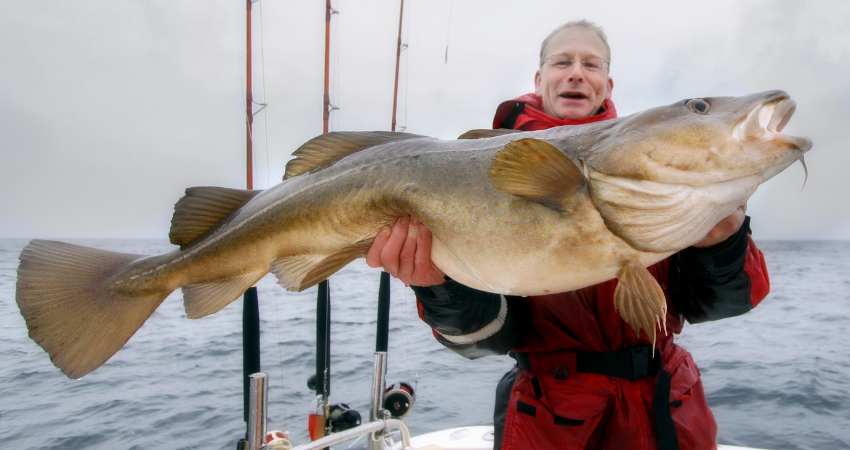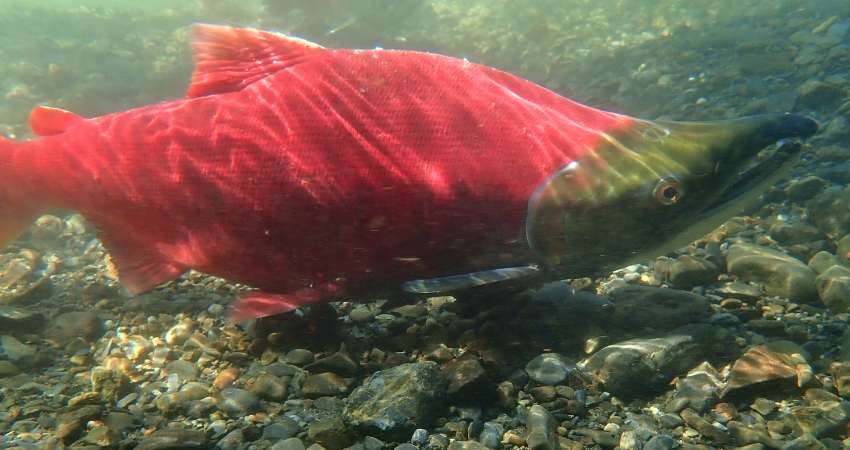Pacific Cod vs Sockeye (Pacific Salmon) Which is Better?
Pacific cod and sockeye salmon are both commonly eaten fish from the Pacific Ocean. Since they’re both packed with vitamins and minerals, many people wonder which one is better, pacific cod or sockeye salmon?
Sockeye salmon is better than pacific cod due to its higher percentage of vitamins and minerals. Sockeye also contains 540% more heart healthy omega-3 fatty acids. Sockeye salmon is more flavorful due to its healthy fat content compared to pacific cod’s milder taste.
This article will include a side-by-side nutrient comparison between the two fish. I’ll compare their tastes, textures, costs and whether one can substitute for the other. If you’re wondering about mercury, I’ll discuss their mercury levels also.
As a Certified Health Coach, many of my clients ask me about seafood. In addition to coaching clients about cod and sockeye, I’ve purchased, researched and consumed both fish for over 20 years.

Pacific Cod and Sockeye Nutritional Values
The following table compares the nutrients contained per four ounces:
| Nutrient | Sockeye Salmon, raw (4 Oz) | Pacific Cod, raw (4 Oz) |
| Calories | 149 | 78 |
| Fat | 5.3 g | 0.5 g |
| Saturated Fat | 0.9 g | 0.1 g |
| Cholesterol | 58 mg | 53 mg |
| Protein | 25 g | 17 g |
| Omega-3 | 0.97 g | 0.15 g |
| B-6 | 0.8 mg | 0.1 mg |
| B-12 | 5.3 mcg | 2.2 mcg |
| Thiamin | 0.15 mg | 0.03 mg |
| Riboflavin | 0.23 mg | 0.05 mg |
| B5 | 1.2 mg | 0.3 mg |
| Iron | 0.4 mg | 0.2 mg |
| Niacin | 9.6 mg | 1.2 mg |
| Folate | 6.8 mcg | 7.9 mcg |
| Potassium | 416 mg | 266 mg |
| Magnesium | 34 mg | 22 mg |
| Phosphorus | 291 mg | 318 mg |
| Calcium | 10.2 mg | 9.0 mg |
| Zinc | 0.5 mg | 0.3 mg |
| Selenium | 33.8 mcg | 26.0 mcg |
Nutrient Sources1 ((Nutrition Value: Fish, raw, Pacific, cod))
While examining the table above both fish contain a wide variety of healthy nutrients. Therefore, let’s take a close look at which one is healthier.
Sockeye salmon is healthier than pacific cod due to its higher percentage of omega-3 fatty acids, B vitamins and minerals. Sockeye provides more protein, B6, B12, thiamin, riboflavin, B5, iron, niacin, potassium, magnesium, calcium, zinc and selenium.
Pacific cod is also nutritious and offers many of the same nutrients but in less percent per serving. It does contain a higher percentage of folate and phosphorus. In addition, if counting calories, cod is leaner than salmon containing less calories, fat and cholesterol.
Although the less fat from pacific cod is due to its lower heart healthy omega-3 fatty acids. Salmon is a better option overall. Also, if protein is important to you, sockeye contains much more protein per serving.
The next section about health benefits explains why omega-3s are so important to your health.
I typically choose to eat salmon more often due to its omega-3s. If they don’t have what I want, cod is usually my next choice.
Pacific Cod vs Sockeye Salmon Health Benefits
Both fish provide the same nutrients and therefore the same benefits. Although I broke down the benefits by which fish offers the higher percentage of each nutrient ((FDA: Seafood Nutrition Facts)).
Sockeye (Pacific Salmon) Health Benefits
Omega 3 Fatty Acids
Sockeye salmon provides 0.97 grams of omega-3 per four ounces raw. It contains approximately 540% more which leads to the question, why does omega-3 fatty acids matter so much?
It’s because omega-3 fatty acids are heart healthy and help keep arteries healthy. The omega-3s in sockeye may help with the following:
- Keeping bad cholesterol low.
- Keeping good cholesterol high.
- Reducing inflammation.
- Reducing plaque build-up.
- Lowering triglycerides
- Help keep the heart rhythms more normal.
DHA and EPA, two of the fatty acids, are associated with lowering blood pressure and improving the health of blood vessels ((National Center for Biotechnology: Marine Omega-3 Supplementation and Cardiovascular Disease)).
Studies suggest omega-3s can help reduce joint pain and stiffness in people with rheumatoid arthritis. They may also boost the effectiveness of anti-inflammatory drugs.

If you’re wondering how Atlantic compared in omega-3s check out my article, Pacific vs Atlantic Cod – What’s The Difference?
Potassium
Since the recommended daily amount is 4,700 mg, both fish provides an excellent number.
Potassium is beneficial for reducing sodium intake. It helps the body reduce fluids and rids excess sodium ((American Heart Association: How Potassium Can Help Control High Blood Pressure)). This process helps to reduce blood pressure.
The more potassium you consume, the more sodium your body will lose. Consuming too much sodium or not enough potassium throws off the delicate balance the kidneys need to remove the excess water2.
According to Harvard Health, a number of studies have shown a connection between low potassium levels and increased blood pressure3.
Magnesium
Adding magnesium to your diet could be instrumental in improving sleep related issues like insomnia.
Magnesium relaxes and calms the whole body including the blood vessels ((National Institutes of Health: Magnesium)). More so, it helps keep blood pressure levels balanced and stable. A recent study researched 22 studies and concluded magnesium supplementation decreased diastolic and systolic blood pressure4.
Magnesium helps control muscle and nerve function, blood sugar and blood pressure. In the muscles and heart, magnesium competes with calcium to help the muscles relax after contracting.
When the body is low in magnesium, calcium can over stimulate the heart muscle’s cells causing a rapid or irregular heartbeat.
Selenium
Both fish contain a good amount of selenium. Selenium is an underreported nutrient. I’m unsure why because studies5 show selenium may help to protect the following:
- Heart disease
- Thyroid
- The immune system
- Cognitive issues
Calcium
Both fish provide a good amount of calcium. Like magnesium, calcium is important for blood pressure and the heart.
Harvard Health reports calcium helps maintain blood pressure because it helps to control the relaxing and tightening of blood vessels6. Calcium also helps the following:
- Build and maintains strong bones.
- Muscles need calcium to function properly.
- Improve nerve function.
B Vitamins
The B vitamins in the table above include B6, B12, B5, B1 (thiamin), B2 (riboflavin), B3 (niacin) and B9 (folate).
B vitamins help support the following:
- Cardiovascular disease
- Red blood cells
- Brain function
- Nerve function
- Digestion
- Energy levels
Pacific Cod Health Benefits
Folate
Also known as B9, pacific cod provides 7.9 mcg per four ounces. A deficiency in folate has been linked to depression in people with epilepsy. Low folate has been associated with an increased risk of depression7.
Folic acid (B9) can improve blood flow and help blood vessels to relax. In a study of over 3,000 women, the findings suggest that using folic acid containing supplements may lower the risk for high blood pressure during pregnancy and preeclampsia8.
Phosphorus
Phosphorus has been shown in studies to may help the following:
- Muscle contraction.
- Muscle recovery after exercise.
- Promoting healthy nerve conduction.
- Promote bone and teeth strength.
- Aids the kidneys in waste removal.
- Help the body manage and store energy.
Tastes and Textures
One of the most important things people takes into consideration when choosing a fish is its taste. Let’s compare the taste of the two fish from the Pacific Ocean.
Sockeye has a fishier taste than cod which doesn’t taste fishy at all. Cod is mild to sweet tasting and is buttery. Sockeye and pacific cod both have a firm texture although sockeye is softer.
Sockeye salmon has a rich, slightly fishy flavor. It’s slightly oily due to its high fat content. The texture is firm and dense although it’s buttery and feels like it melts in your mouth when properly cooked.
Sockeye salmon is deeply flavored and beautifully colored.
Pacific cod has a non-fishy and mild taste. The mild taste can be sweet at times and is good for people who don’t like a fishy tasting seafood. It’s texture is firm, flaky and moist if cooked properly. Pacific is moister than Atlantic cods.
I conducted original research on taste by polling my clients, readers and members of food groups I belong to. I asked which of the two fish, pacific cod vs sockeye salmon, tastes better?
- 50% said they preferred sockeye.
- 43% said they preferred cod.
- 7% said they had no preferrence.
To conduct more taste research, I set up a blind taste test at my home. Both fish were cooked and seasoned the same way. 75% of the people chose the sockeye.
Substitutes
Sometimes you won’t have the exact fish in your refrigerator or freezer for a recipe. Sometimes the seafood section of the supermarket doesn’t have the fish you need. Therefore, let’s examine if you can substitute one for the other.
Pacific cod can substitute for salmon although the flavors are different as sockeye tastes more oily and fishy. They have similar textures and the same cooking methods can be used. Both fish can be cooked by frying, baking, broiling, steaming or poaching.
Good substitutes for Pacific cod include:
- Pollock
- Haddock
- Halibut
- Striped bass
- Tilapia
- Mahi mahi
The best sockeye salmon substitutes include:
- Pollock
- Pink salmon
- Cod
- Trout
- Sea bass
- Halibut
- Hake
When substituting either fish always stick to the following:
- Same size and weight.
- Stick with similar fillets, whole fillet or cross section.
- Stick with skinless or skin when the recipe calls for one.
- Texture is more important for certain cooking methods. Like using a firmer texture when grilling9.
If you’re interested in finding out how coho salmon compared, check out my article here, Coho Salmon: What’s The Difference?
How Much Does Sockeye Salmon and Pacific Cod Cost
The costs for fish will vary depending on how the fish are caught. A fish caught in the ocean will definitely be more expensive than a fish farm-raised.
Wild fish is more labor intensive, shipping and higher costs overall.
When purchasing either one, be sure to check the label to see if it is wild-caught or farmed salmon. Let’s take a close look at their prices.
Sockeye salmon is more expensive than pacific cod. The average cost for wild caught sockeye is $14.99 per pound while the average cost for wild caught pacific cod is $8.99 per pound. The cost will vary depending on location, whether it is farm-raised or wild-caught, fresh or frozen.
I conducted research on their costs by visiting my local store and checking their prices.
I checked the Shopright supermarket, in store and online, and found the following prices.
- Fresh wild caught Alaska cod fillet
- $8.99 per pound
- Fresh wild salmon
- $14.99 per pound

Mercury Levels
The EPA and FDA have issued warnings and suggestions regarding mercury levels in fish and how often they should be consumed10. This is especially important for young infants, developing children and pregnant women.
They established a list of best fish, good choices and ones to avoid based on their mercury levels.
Sockeye salmon and pacific cod have similar levels of mercury. They are both listed on the FDA’s best choices of fish to consume regarding their mercury levels.
Always check with a physician prior to eating new foods or changing your dietary habits.
If you’re interested in finding about how sea bass compared, check out my article, Sea Bass – Is One Better? Let’s Compare.
Sockeye Salmon vs Pacific Cod: Habitats, Size, Weight, Appearance
What is the difference between the two fish?
Sockeye salmon and pacific cod are from different families. The average pacific cod is longer than a sockeye although they weigh approximately the same. Sockeye salmon has more color with silver, greenish-blue and bright red coloring while pacific cod is brownish. Sockeye are anadromous while pacific cod is salt water.
Scientific Classifications, Families, Species
- Sockeye salmon are from the salmonidae family, oncorhynchus genus and the species O. nerka.
- Pacific cod are from the Gadidae family, Gadus genus and the species Macrocephalus.
Salmon Species: King Salmon and Alaskan Salmon
Sockeye salmon can be from Alaska and some may call them Alaskan salmon or Pacific salmon. Alaska is home to several salmon species including sockeye coho, chinook or King salmon, pink and chum.
Salmon species on the other other side of The Unites States, Atlantic coast are called Atlantic salmon.

Habitats
- Sockeye can be found in northwest Alaska to the west coast rivers in Oregon.
- Pacific cod is found in the North Pacific Ocean from the Bering Sea to California in the east and to the Sea of Japan in the west.
Colors
- While spending their time in the ocean, sockeye have silver sides, white bellies and greenish-blue on their backs. Back in the freshwater, during spawning, their bodies turn bright red and the head green.
- Pacific cod is brownish with dark spots with a cream lateral line running down the body.
Appearance
- Sockeye salmon has a long, narrow body and two dorsal fins. Spawning males develop a humped back.
- Pacific cod is the typical long, narrow body shape and has three dorsal fins.
Size and Weight
- Sockeye salmon grows an average 18-30″ in length and weighs 4-15 pounds.
- Pacific cod grows an average 25-30″ in length and weighs 5-15 pounds.
Age
- Sockeye salmon averages 4-5 years.
- Pacific cod lives 20 years or less.

If you have any questions about this article or other featured content, don’t hesitate to email and notify us. You can find an email on our contact page. We’ll do our best to reply as soon as possible.
Read Next – More Salmon Species and Fish Articles!
Atlantic vs Wild Salmon: Which Is Better?
Pink vs Red Salmon: What’s The Difference?
Sockeye vs King Salmon: A Complete Comparison
Alaska Pollock vs Atlantic Pollock: Which Is Better?
- Nutrition Value: Fish, raw, sockeye, salmon [↩]
- National Center for Biotechnology Information: The Effect of the Sodium to Potassium Ratio on Hypertension Prevalence: A Propensity Score Matching Approach [↩]
- Harvard Health: Potassium lowers blood pressure [↩]
- National Center for Biotechnology Information: Effect of magnesium supplementation on blood pressure: a meta-analysis [↩]
- National Institutes of Health: Selenium [↩]
- Harvard Health: Key minerals to help control blood pressure [↩]
- National Center for Biotechnology Information: Is Depression Related to Low Folate Levels in People with Epilepsy? An Observational Study and Meta-analysis [↩]
- Women And Birth: Folic acid supplement use and the risk of gestational hypertension and preeclampsia [↩]
- Sea Grant North Carolina: Fish Flavors and Substitutions [↩]
- FDA: Advice about Eating Fish [↩]
